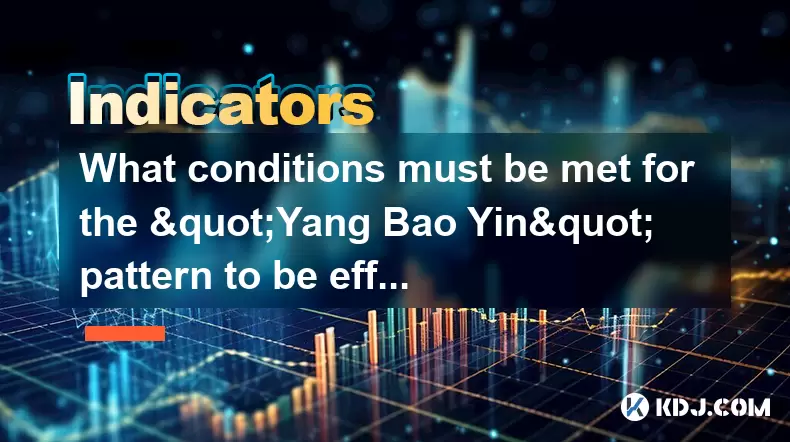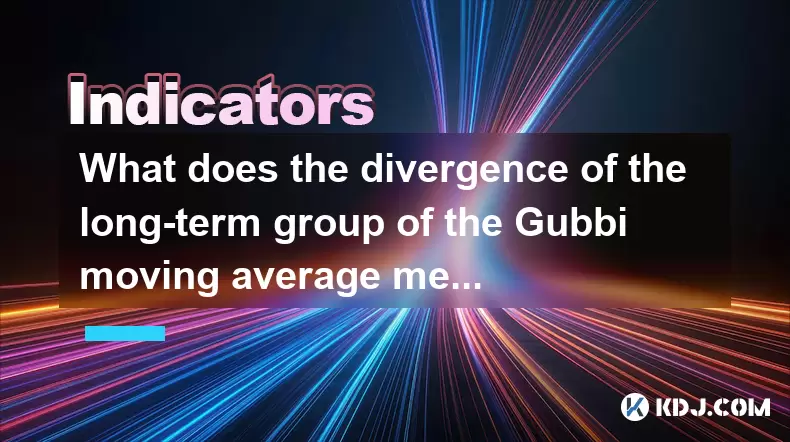-
 Bitcoin
Bitcoin $105,606.4998
2.12% -
 Ethereum
Ethereum $2,561.4949
2.56% -
 Tether USDt
Tether USDt $1.0005
0.02% -
 XRP
XRP $2.1391
1.37% -
 BNB
BNB $653.4842
1.53% -
 Solana
Solana $147.2910
2.31% -
 USDC
USDC $0.9998
0.00% -
 Dogecoin
Dogecoin $0.1784
3.78% -
 TRON
TRON $0.2701
0.73% -
 Cardano
Cardano $0.6377
1.74% -
 Hyperliquid
Hyperliquid $42.0282
10.58% -
 Sui
Sui $3.0423
2.91% -
 Bitcoin Cash
Bitcoin Cash $444.4445
9.93% -
 Chainlink
Chainlink $13.3183
2.77% -
 UNUS SED LEO
UNUS SED LEO $9.0217
0.56% -
 Avalanche
Avalanche $19.2345
1.38% -
 Stellar
Stellar $0.2589
1.12% -
 Toncoin
Toncoin $3.0082
2.59% -
 Shiba Inu
Shiba Inu $0.0...01207
4.35% -
 Hedera
Hedera $0.1577
3.59% -
 Litecoin
Litecoin $85.8538
4.24% -
 Polkadot
Polkadot $3.8194
2.66% -
 Ethena USDe
Ethena USDe $1.0004
-0.01% -
 Monero
Monero $307.9327
1.29% -
 Dai
Dai $0.9999
0.02% -
 Bitget Token
Bitget Token $4.5422
1.82% -
 Uniswap
Uniswap $7.5634
9.74% -
 Pepe
Pepe $0.0...01117
5.05% -
 Aave
Aave $289.0564
6.25% -
 Pi
Pi $0.5818
6.50%
How to read the CR indicator's four lines that diverge and then converge? Key pressure point identification skills
The CR indicator helps crypto traders spot momentum shifts and potential reversals through divergence, convergence, and band interactions.
Jun 13, 2025 at 12:21 pm

Understanding the CR Indicator in Cryptocurrency Trading
The CR indicator, also known as the Chikin Ratio or Chaikin Oscillator, is a technical analysis tool widely used in cryptocurrency trading to gauge momentum and potential price reversals. It combines volume and price data to provide traders with insights into market strength and weakness. The indicator typically consists of four lines: two signal lines, a centerline, and the main oscillator line. These lines often diverge and then converge, creating patterns that can be interpreted for trading signals.
In crypto markets, where volatility is high and trends can reverse quickly, understanding how these four lines behave is crucial for making informed decisions. This article delves into the mechanics of the CR indicator's divergence and convergence patterns and how they can help identify key pressure points in price action.
Key Takeaway:
The CR indicator’s four lines offer insight into momentum shifts by showing when buying or selling pressure is increasing or decreasing.Breaking Down the Four Lines of the CR Indicator
The CR indicator consists of the following four lines:
- Oscillator Line (Main Line): Reflects the difference between the 3-day and 10-day exponential moving averages (EMAs) of the Chaikin Accumulation/Distribution Line.
- Signal Line: A 10-day EMA of the oscillator line.
- Upper Band: Often set at +20 level, indicating overbought conditions.
- Lower Band: Usually set at -20 level, signaling oversold territory.
When the oscillator line diverges from the signal line, it indicates a shift in momentum. If the oscillator line crosses above or below the signal line, it may suggest a trend reversal. The upper and lower bands serve as thresholds for identifying extreme market conditions.
Important Note:
Divergence occurs when the price moves in one direction while the CR oscillator moves in the opposite, suggesting weakening momentum.How to Identify Divergence Patterns in the CR Indicator
Divergence in the CR indicator happens when the price chart forms higher highs or lower lows, but the oscillator fails to confirm this movement. There are two primary types of divergence:
- Bullish Divergence: Price makes a lower low, but the CR oscillator makes a higher low. This suggests hidden buying pressure and a potential upward reversal.
- Bearish Divergence: Price records a higher high, yet the CR oscillator creates a lower high. This signals waning bullish strength and a possible downward move.
To spot divergence:
- Look for recent swing highs and lows on the price chart.
- Compare them with corresponding peaks and troughs on the CR oscillator.
- Ensure both time frames align to avoid false readings.
Critical Step:
Use candlestick charts alongside the CR indicator to confirm divergence visually before entering a trade.Convergence Patterns and Their Significance
After divergence occurs, the CR oscillator lines tend to converge, meaning the oscillator line approaches or crosses the signal line. Convergence usually indicates that momentum is stabilizing and a new trend may be forming.
There are several ways to interpret convergence:
- Crossover Confirmation: When the oscillator line crosses above the signal line during convergence, it may indicate a bullish trend start. Conversely, a cross below the signal line could signal bearish momentum.
- Band Touches: If the oscillator converges near the upper or lower band, it may mean the asset is consolidating after an overbought or oversold condition.
Traders should watch for volume spikes during convergence, as they can reinforce the validity of the pattern.
Pro Tip:
Combine convergence observations with support/resistance levels for stronger trade setups.Identifying Key Pressure Points Using the CR Indicator
Pressure points are critical zones where either buyers or sellers dominate. In crypto trading, identifying these areas using the CR indicator involves analyzing its four lines in relation to price behavior.
Here’s how to do it:
- Monitor when the oscillator line approaches the upper or lower band — these are early signs of strong pressure.
- Watch for repeated tests of the same band level without breaking through — this shows sustained pressure.
- Observe how the signal line reacts during these periods. A flattening signal line suggests consolidation, while a steep slope implies accelerating momentum.
Using horizontal lines drawn at previous highs/lows on the price chart can further validate pressure zones identified via the CR indicator.
Remember:
Pressure points confirmed by multiple indicators increase the probability of successful trades.Practical Steps to Apply CR Indicator Analysis in Crypto Trading
Applying the CR indicator effectively requires careful setup and interpretation. Here’s a step-by-step guide tailored for cryptocurrency traders:
- Select a reliable trading platform that supports the Chaikin Oscillator (e.g., Binance, TradingView).
- Add the CR indicator to your chart and ensure all four lines are visible.
- Adjust default settings if necessary (some traders prefer faster EMAs for quicker signals).
- Zoom into relevant timeframes — daily or 4-hour charts work best for spotting meaningful divergences.
- Mark key price swings manually to compare with oscillator swings.
- Wait for confirmation candles before entering a trade based on CR signals.
- Set stop-loss and take-profit levels aligned with support/resistance zones.
Crucial Detail:
Always backtest strategies using historical data before applying them in live trading.Frequently Asked Questions
Q: Can the CR indicator be used alone for trading decisions?
A: While the CR indicator provides valuable insights, it's best used in combination with other tools like RSI, MACD, or Fibonacci retracements to filter out false signals and improve accuracy.
Q: Is the CR indicator suitable for all cryptocurrencies?
A: Yes, the CR indicator works across various assets, including Bitcoin, Ethereum, and altcoins. However, results may vary depending on market liquidity and volatility.
Q: What timeframes yield the most reliable CR signals in crypto?
A: Higher timeframes such as 4-hour and daily charts tend to produce more reliable CR signals due to reduced noise and clearer momentum shifts.
Q: How often should I adjust the CR indicator settings?
A: Default settings (3 and 10 EMAs) are generally effective. Only consider adjustments if you're consistently noticing lag or overly sensitive signals in specific market conditions.
Disclaimer:info@kdj.com
The information provided is not trading advice. kdj.com does not assume any responsibility for any investments made based on the information provided in this article. Cryptocurrencies are highly volatile and it is highly recommended that you invest with caution after thorough research!
If you believe that the content used on this website infringes your copyright, please contact us immediately (info@kdj.com) and we will delete it promptly.
- Punisher Coin ($PUN) Surges Past the $150,000 Mark in Its Fifth Presale Stage, Targeting a 12x Return
- 2025-06-14 08:55:12
- A growing divide among U.S. states reveals opposing approaches to cryptocurrencies and blockchain innovation.
- 2025-06-14 08:55:12
- Shiba Inu (SHIB) Price Gears for 20% Rally as it Tests Crucial Resistance
- 2025-06-14 08:50:12
- Sui Breaks Out From Consolidation: $4 SUI Price Target Now Achievable
- 2025-06-14 08:50:12
- tBTC Launches on Starknet, Bringing Bitcoin to the World of Zero-Knowledge Rollups
- 2025-06-14 08:45:12
- NFT Casinos Are Merging Gaming and Crypto in Interesting Ways
- 2025-06-14 08:45:12
Related knowledge

How to calculate the probability of trend continuation after the MACD column divergence?
Jun 14,2025 at 08:01am
Understanding MACD Column DivergenceThe Moving Average Convergence Divergence (MACD) is a widely used technical indicator in cryptocurrency trading. The MACD column, also known as the histogram, represents the difference between the MACD line and the signal line. When price makes a new high or low but the MACD histogram does not confirm this movement, a...

What are the volume requirements for adjusting the K line in the "rising three methods" pattern?
Jun 14,2025 at 07:50am
Understanding the 'Rising Three Methods' Pattern in Cryptocurrency TradingThe 'rising three methods' pattern is a bullish continuation candlestick formation that traders often use to identify potential upward momentum in cryptocurrency price charts. This pattern typically appears during an uptrend and suggests that the trend is likely to continue after ...

What conditions must be met for the "Yang Bao Yin" pattern to be effective?
Jun 14,2025 at 06:42am
Understanding the 'Yang Bao Yin' Pattern in Cryptocurrency TradingThe Yang Bao Yin pattern is a candlestick formation commonly observed in technical analysis within the cryptocurrency market. This pattern typically signals a potential bullish reversal after a downtrend. However, for this pattern to be effective and reliable, certain conditions must be m...

Is it an opportunity for the long positive line with large volume to break through the platform and then shrink back?
Jun 14,2025 at 04:42am
Understanding the Long Positive Line with Large VolumeIn technical analysis, a long positive line refers to a candlestick pattern where the closing price is significantly higher than the opening price, often indicating strong buying pressure. When this occurs alongside large volume, it suggests that market participants are actively involved in pushing t...

How to grasp the 60-minute KD oversold + 15-minute bottom divergence?
Jun 14,2025 at 06:15am
Understanding the 60-Minute KD Oversold SignalThe KD indicator, also known as the Stochastic Oscillator, is a momentum oscillator that compares a particular closing price of a cryptocurrency to its price range over a given time period. When analyzing 60-minute charts, traders often look for oversold conditions in the KD line, which typically occur when ...

What does the divergence of the long-term group of the Gubbi moving average mean? How long can the trend last?
Jun 14,2025 at 02:56am
Understanding the Gubbi Moving AverageThe Gubbi moving average is a technical indicator used by traders in cryptocurrency markets to identify trends and potential reversals. Unlike traditional moving averages, the Gubbi variant incorporates unique calculations that emphasize price momentum and volatility adjustments. This makes it particularly useful fo...

How to calculate the probability of trend continuation after the MACD column divergence?
Jun 14,2025 at 08:01am
Understanding MACD Column DivergenceThe Moving Average Convergence Divergence (MACD) is a widely used technical indicator in cryptocurrency trading. The MACD column, also known as the histogram, represents the difference between the MACD line and the signal line. When price makes a new high or low but the MACD histogram does not confirm this movement, a...

What are the volume requirements for adjusting the K line in the "rising three methods" pattern?
Jun 14,2025 at 07:50am
Understanding the 'Rising Three Methods' Pattern in Cryptocurrency TradingThe 'rising three methods' pattern is a bullish continuation candlestick formation that traders often use to identify potential upward momentum in cryptocurrency price charts. This pattern typically appears during an uptrend and suggests that the trend is likely to continue after ...

What conditions must be met for the "Yang Bao Yin" pattern to be effective?
Jun 14,2025 at 06:42am
Understanding the 'Yang Bao Yin' Pattern in Cryptocurrency TradingThe Yang Bao Yin pattern is a candlestick formation commonly observed in technical analysis within the cryptocurrency market. This pattern typically signals a potential bullish reversal after a downtrend. However, for this pattern to be effective and reliable, certain conditions must be m...

Is it an opportunity for the long positive line with large volume to break through the platform and then shrink back?
Jun 14,2025 at 04:42am
Understanding the Long Positive Line with Large VolumeIn technical analysis, a long positive line refers to a candlestick pattern where the closing price is significantly higher than the opening price, often indicating strong buying pressure. When this occurs alongside large volume, it suggests that market participants are actively involved in pushing t...

How to grasp the 60-minute KD oversold + 15-minute bottom divergence?
Jun 14,2025 at 06:15am
Understanding the 60-Minute KD Oversold SignalThe KD indicator, also known as the Stochastic Oscillator, is a momentum oscillator that compares a particular closing price of a cryptocurrency to its price range over a given time period. When analyzing 60-minute charts, traders often look for oversold conditions in the KD line, which typically occur when ...

What does the divergence of the long-term group of the Gubbi moving average mean? How long can the trend last?
Jun 14,2025 at 02:56am
Understanding the Gubbi Moving AverageThe Gubbi moving average is a technical indicator used by traders in cryptocurrency markets to identify trends and potential reversals. Unlike traditional moving averages, the Gubbi variant incorporates unique calculations that emphasize price momentum and volatility adjustments. This makes it particularly useful fo...
See all articles

























































































